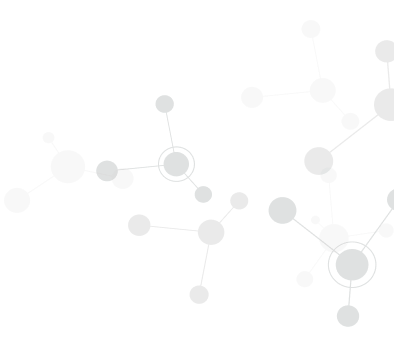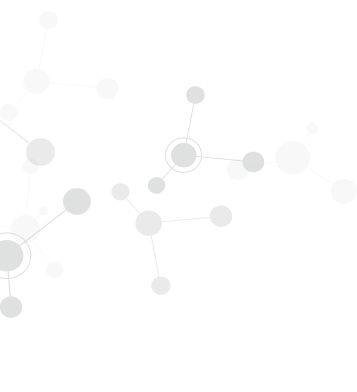INNOVATIVE
SOLUTIONS

Pipeline
A diversified and integrated pipeline of products in Neurology
Pipeline
Our pipeline is focused on metabolic dysfunction in neurological diseases with high unmet needs, across therapeutic and diagnostic spectrums. Our pipeline leverages the knowledge and experience of Cerecin’s leadership in research and understanding of ketosis and its role in neurometabolism and bioenergetics for the management of AD, Migraine and pediatric epilepsy. We have two assets in the preclinical phase: CER-022 is being investigated for use in diagnosing specific conditions based on ketone metabolism and CER-081, a ketone precursor, is being investigated for use in acute neurological conditions.


-
ALZHEIMER'S DISEASE
Entering global Phase 3 pivotal trial to study CER0001 in treatment of mild to moderate Alzheimer’s disease in APOE4 negative patients
Learn More -
Migraine
Completed Phase 2a study in migraine prevention. Currently planning Phase 3 global trial
Learn More -
Infantile Spasms
Encouraging data from Pilot Phase 2a study in 2023 and preparation underway to initiate global Phase 3 pivotal trial
Learn More -
CER-022
Radiolabeled tracer in preclinical stage being studied for the diagnosis of neurological & other conditions having underlying dysfunction in ketone metabolism
-
CER-081
Ketone precursor in preclinical stage with a parenteral mode of administration with applications being evaluated in treatment of acute neurological conditions such as Traumatic Brain Injury, Stroke among others
Our Therapeutic Areas

ALZHEIMER'S DISEASE
Alzheimer’s disease (AD) is an age-associated, neurodegenerative disease characterized by a progressive decline in memory and language, and, pathologically, by accumulation of senile plaques and neurofibrillary tangles in the brain.
Alzheimer’s disease (AD) is an age-associated, neurodegenerative disease characterized by a progressive decline in memory and language, and, pathologically, by accumulation of senile plaques and neurofibrillary tangles in the brain. Despite significant advances in AD research, there exists a tremendous need for new AD therapies. Most developed countries will experience a dramatic demographic shift toward an older population in the next 50 years, which is anticipated to greatly increase the prevalence of AD. The rise in the number of AD patients will place a tremendous social and economic burden on the developed world.
World health organization estimates ~38 M patients of AD in the world in 20231, are expected to grow to 132M by 2050. An estimated 6.7M Americans are living with Alzheimer’s dementia2. Within South Korea, there are 420,000 AD patients3. As the most common form of dementia and the 5th leading cause of death in adults over 65 years old, the estimated healthcare costs associated with AD treatment in the USA were $321 billion in 2022, with costs projected to exceed $1 trillion by 20504.
The diagnosis of AD is based on clinical assessment. MRI is typically performed and specific cases need FDG, Amyloid, TAU – PET imaging and cerebrospinal fluid (CSF) testing. This adds significant cost burden to patients or healthcare system. AD is inexorably progressive, but the rate of progression can vary. The average life expectancy after diagnosis can be between 8 and 10 years5.
INFANTILE SPASMS
Infantile Spasms (IS), also known as West Syndrome, is a form of epilepsy that occurs in infants, characterized by spasms that are rapid, muscular contractions lasting one to two seconds, in clusters ranging from a few spasms to more than 100 spasms per cluster, along with hypsarrhythmia. It is a complex, rare and devastating disorder which can lead to severe consequences if not treated early. The majority of infants with IS present before the age of 1 year.
Infantile Spasms (IS), also known as West Syndrome, is a form of epilepsy that occurs in infants. Infantile Spasms is a complex, rare and devastating disorder which can lead to severe consequences if not treated early. IS may occur as the result of another condition (symptomatic IS), such as infections of the brain, oxygen deficiency in the womb, metabolic and immunologic disorders, or there may be no identified etiology (cryptogenic IS). The majority of infants with IS present before the age of 1 year.
IS is a rare orphan disorder with an incidence of 1.6 to 4.5 per 10,000 live births and estimated at 2,000 to 2,500 new cases in the U.S. each year. Infants with IS experience rapid, muscular contractions lasting one to two seconds, in clusters ranging from a few spasms to more than 100 spasms per cluster, along with hypsarrhythmia. More than half of IS patients suffer from development delays and develop other seizure types as they age. While patients who achieve freedom from seizures and hypsarrhythmia can have a favorable prognosis, current medical treatment options (hormonal therapy, vigabatrin and conventional anti-epileptic drugs) are limited and do not provide adequate relief for all IS patients.


MIGRAINE
Migraine is the third most common disease in the world, affecting 1 billion people worldwide, concentrated in populations which are of productive age. Migraine is characterized by attacks of moderate to severe throbbing head pain. There is currently no cure for this neurologic disorder.
Migraine is the third most common disease in the world, affecting 1 billion people worldwide, characterized by attacks of moderate to severe throbbing head pain. In some cases, patients suffer from migraine with aura, where the headaches are accompanied by visual, sensory or motor disturbances (or combinations of those), such as blurred vision, flashes of light, blind spots, numbness or sense of heaviness of the limbs. Migraine is most likely to occur in people who have family history of migraine and is most common in women between the ages of 18-44.
Migraine patients experience headaches that last from 4 to 72 hours. Most patients also suffer from neurological symptoms along with the headaches such as hemiparesis, aphasia and confusion, as well as premonitory symptoms before headache onset such as heightened sensitivity to light, sound, and odors, lethargy or uncontrollable yawning, mental and mood changes (eg, depression, anger, euphoria). A wide range of treatment options for migraine are available, and can be classified as abortive therapy to stop migraine headache attacks (e.g., range of analgesics) or prophylactic therapy for more patients who see more frequent and longer duration of attacks (e.g., CGRP inhibitors, antiepileptics, antidepressants, antihypertensives, botulinum toxin). Despite the range of options available, less than half of patients experience more than 50% reduction in monthly migraine days and continue to experience headaches and symptoms.